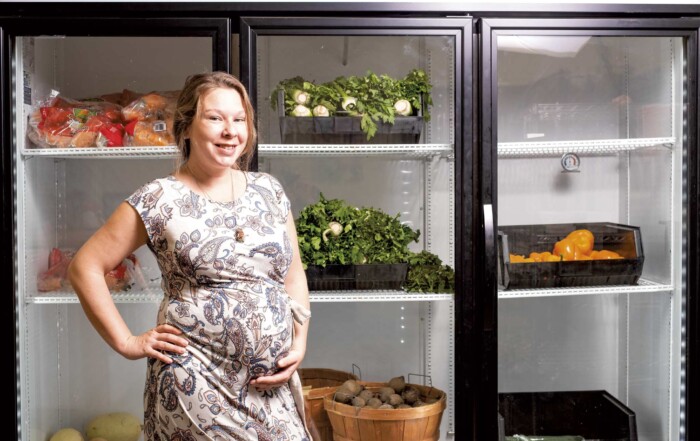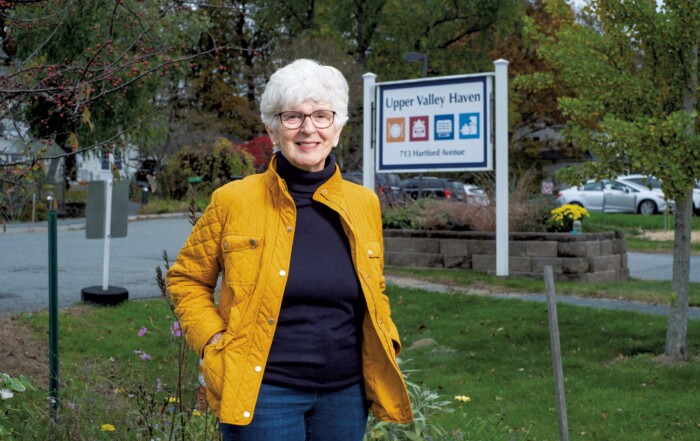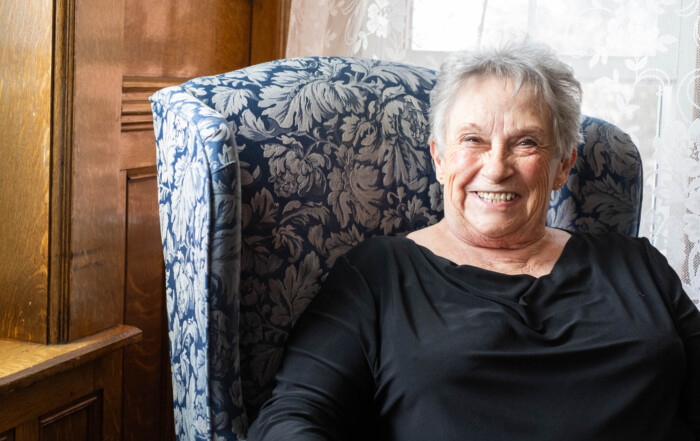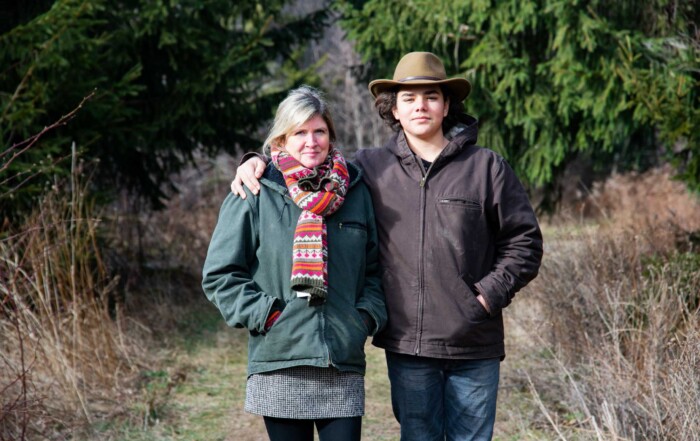Big Heart in a Little Town
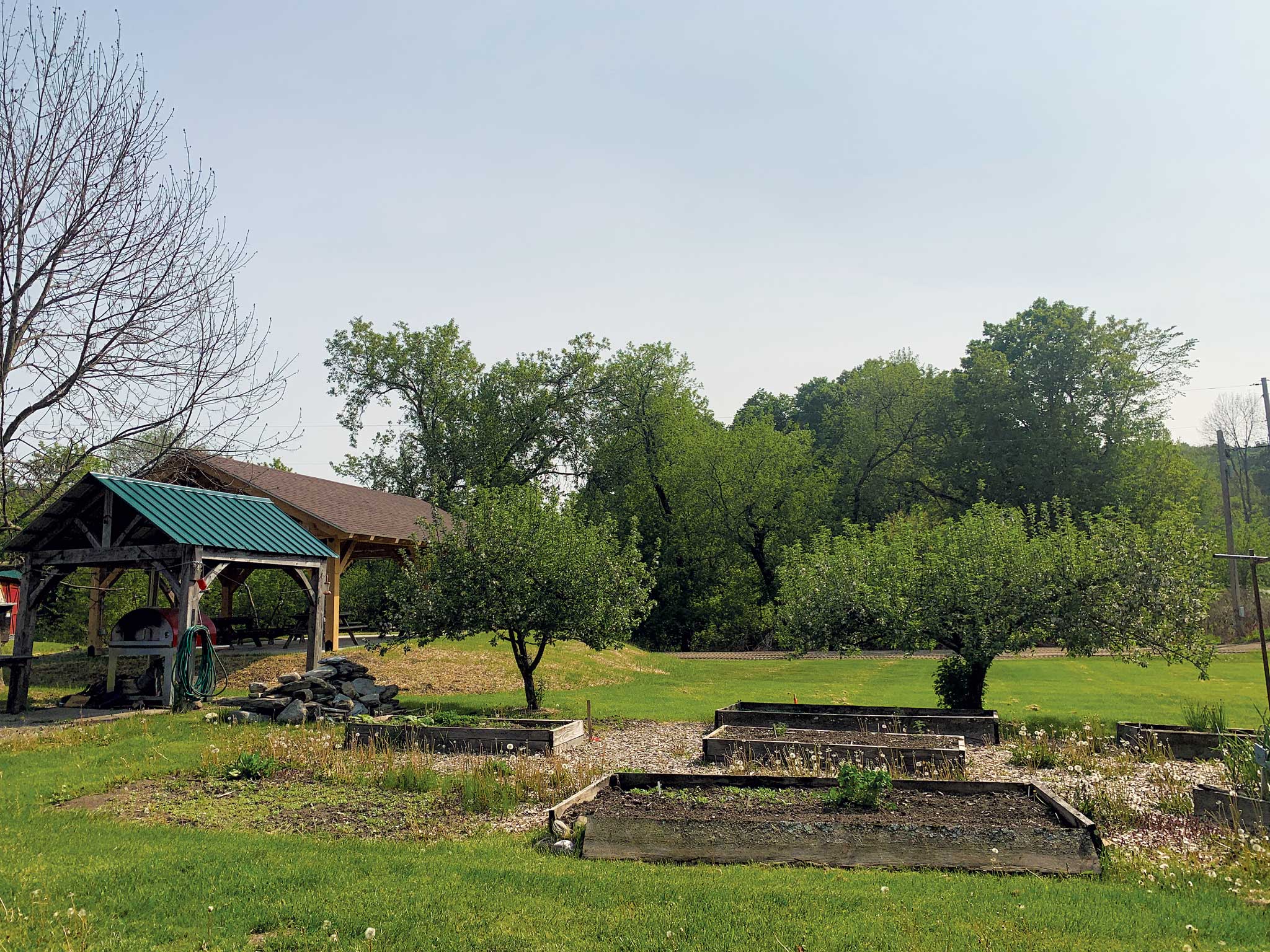
At the Fairfield food shelf, neighbors are supporting one another through purchasing and distributing food grown within their own community. Thanks to a Foodbank grant program, and supporters like you, community members experiencing hunger can enjoy more local food grown by their neighbors.
At the Fairfield Community Center Association (FCCA) food shelf, Julie is cleaning leeks. Pat prepares vibrant vegetable displays in baskets, and Megan is chatting with guests. A neighbor stops in to donate several dozen eggs from their own chickens. “People have a lot of heart, who live here,” says Megan. “And you get to know everybody!”
FCCA does a lot when it comes to food: an outdoor pizza oven fires up for dinners that help fund the center; community lunch is served on Tuesdays; food bags are packed and delivered weekly to migrant farmworkers and older housebound neighbors; there are raised beds of veggies for pizza toppings and food shelf samples. “Food is love,” states Pat. “It’s a great way of connecting.”
And there’s a special focus on local food. In an area that produces a lot of food, neighbors often deliver extras from their farms and gardens to the food shelf. Everything from hydroponic lettuce, to rhubarb, to goose eggs.
FCCA also purchases Vermont-grown produce and dairy through Vermont Foodbank’s Vermonters Feeding Vermonters (VFV) Mini-Grants program—supported by friends like you—which offers funding for partners to buy directly from local farmers. By encouraging charitable food sites statewide to buy and distribute more Vermont products, this program helps expand local food access to more neighbors, provide security for farmers, strengthen the Vermont economy, and reduce environmental impact.

“We have relationships with a number of farms that let us know when they have extra produce. Two farms in particular, Stone Hollow and Cat’s Meow…And [we] offer to buy seconds of high-end cheese producers, trying to give them a market for those products. In particular, Stony Pond Farm…Otherwise it’s just been miscellaneous vegetables that [community members] have grown,” explains Julie. “For homesteaders, it’s really a benefit to them, to have a little bit of income from the extra produce they grow. And it also gives us a lot more variety. You know if we were dealing with a big farm, we might just get two or three products.”
Beets, carrots, apples, and other storage crops are some of people’s favorite local items to get at the food shelf, as well as spinach, eggs, and whole milk. “People are very happy,” says Pat. “We get good feedback.”
“We’ve definitely seen an increase of need,” explains Megan. “The last few years, the way everything’s going with inflation and everyone struggling to make ends meet, these kinds of places are really important to have.
“Besides the food that we provide, which is of course paramount in these times, people have also been starved for social interaction. And that’s what a lot of this is here…People will come to hang out and to talk…Everyone knows each other’s names…Everyone is from the community. It’s all your neighbors, people that you know and that you respect. A lot of the volunteers are also clients, so they’ll come get their food box and their produce. It’s just the way it works.”
Visiting the Fairfield Community Center is a lesson in the ecosystem of community, the cyclical nature of mutual support. And how, especially in a place like Vermont, sharing local food with neighbors facing hunger has an impact that ripples out.
“I think those relationships are important, with the farmers,” shares Julie. “They come to support the community center, with other programs that we’re putting on. And it really is a way to build community, to grow community.
“I think it’s just good for the clients to know that their needs are being supported by farms, locally, too. And the taste. I mean, and the taste.”

